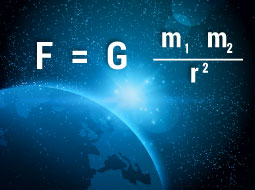Online courses directory (271)
This short course provides an introduction to reactor dynamics including subcritical multiplication, critical operation in absence of thermal feedback effects and effects of Xenon, fuel and moderator temperature, etc. Topics include the derivation of point kinetics and dynamic period equations; techniques for reactor control including signal validation, supervisory algorithms, model-based trajectory tracking, and rule-based control; and an overview of light-water reactor startup. Lectures and demonstrations employ computer simulation and the use of the MIT Research Reactor.
This course is offered during the Independent Activities Period (IAP), which is a special 4-week term at MIT that runs from the first week of January until the end of the month.
Problems in nuclear engineering often involve applying knowledge from many disciplines simultaneously in achieving satisfactory solutions. The course will focus on understanding the complete nuclear reactor system including the balance of plant, support systems and resulting interdependencies affecting the overall safety of the plant and regulatory oversight. Both the Seabrook and Pilgrim nuclear plant simulators will be used as part of the educational experience to provide as realistic as possible understanding of nuclear power systems short of being at the reactor.
This capstone course is a group design project involving integration of nuclear physics, particle transport, control, heat transfer, safety, instrumentation, materials, environmental impact, and economic optimization. It provides opportunities to synthesize knowledge acquired in nuclear and non-nuclear subjects and apply this knowledge to practical problems of current interest in nuclear applications design. Each year, the class takes on a different design project; this year, the project is a power plant design that ties together the creation of emission-free electricity with carbon sequestration and fossil fuel displacement. Students taking graduate version complete additional assignments.
This course is an elective subject in MIT’s undergraduate Energy Studies Minor. This Institute-wide program complements the deep expertise obtained in any major with a broad understanding of the interlinked realms of science, technology, and social sciences as they relate to energy and associated environmental challenges.
A presentation of the fundamentals of modern numerical techniques for a wide range of linear and nonlinear elliptic, parabolic and hyperbolic partial differential equations and integral equations central to a wide variety of applications in science, engineering, and other fields. Topics include: Mathematical Formulations; Finite Difference and Finite Volume Discretizations; Finite Element Discretizations; Boundary Element Discretizations; Direct and Iterative Solution Methods.
This course was also taught as part of the Singapore-MIT Alliance (SMA) programme as course number SMA 5212 (Numerical Methods for Partial Differential Equations).
Learn about a new generation of solar cells, organic solar cells, that promise an answer to the energy demands of the future.
The Origins course tracks the origin of all things – from the Big Bang to the origin of the Solar System and the Earth. The course follows the evolution of life on our planet through deep geological time to present life forms.
The purpose of this course is to discuss modern techniques of generation of x-ray photons and neutrons and then follow with selected applications of newly developed photon and neutron scattering spectroscopic techniques to investigations of properties of condensed matter which are of interest to nuclear engineers.
Physics 101 is the first course in the Introduction to Physics sequence. In general, the quest of physics is to develop descriptions of the natural world that correspond closely to actual observations. Given this definition, the story behind everything in the universe, from rocks falling to stars shining, is one of physics. In principle, the events of the natural world represent no more than the interactions of the elementary particles that comprise the material universe. In practice, however, it turns out to be more complicated than that. As the system under study becomes more and more complex, it becomes less and less clear how the basic laws of physics account for the observations. Other branches of science, such as chemistry or biology, are needed. In principle, biology is based on the laws of chemistry, and chemistry is based on the laws of physics, but our ability to understand something as complex as life in terms of the laws of physics is well beyond our present knowledge. Physics is, however, the…
The physics of the universe appears to be dominated by the effects of four fundamental forces: gravity, electromagnetism, weak nuclear forces, and strong nuclear forces. These forces control how matter, energy, space, and time interact to produce our physical world. All other forces, such as the force you exert in standing up, are ultimately derived from these fundamental forces. We have direct daily experience with two of these forces: gravity and electromagnetism. Consider, for example, the everyday sight of a person sitting on a chair. The force holding the person on the chair is gravitational, and that gravitational force balances with material forces that “push up” to keep the individual in place. These forces are the direct result of electromagnetic forces on the nanoscale. On a larger stage, gravity holds the celestial bodies in their orbits, while we see the universe by the electromagnetic radiation (light, for example) with which it is filled. The electromagnetic force also makes…
PHYS 102x serves as an introduction to electromagnetism, including charge, electric and magnetic forces, induction, current, and resistance.
Watch fun, educational videos on all sorts of Physics questions. Thomas Young's Double Slit Experiment. Newton's Prism Experiment. Bridge Design and Destruction! (part 1). Bridge Design (and Destruction!) Part 2. Shifts in Equilibrium. The Marangoni Effect: How to make a soap propelled boat!. The Invention of the Battery. The Forces on an Airplane. Bouncing Droplets: Superhydrophobic and Superhydrophilic Surfaces. A Crash Course on Indoor Flying Robots. Heat Transfer. Thomas Young's Double Slit Experiment. Newton's Prism Experiment. Bridge Design and Destruction! (part 1). Bridge Design (and Destruction!) Part 2. Shifts in Equilibrium. The Marangoni Effect: How to make a soap propelled boat!. The Invention of the Battery. The Forces on an Airplane. Bouncing Droplets: Superhydrophobic and Superhydrophilic Surfaces. A Crash Course on Indoor Flying Robots. Heat Transfer.
Using vectors to study motion is a fundamental skill to have when studying physics. Vector quantities used to describe the physical world include displacement, velocity, acceleration, and force. In this free online physics course the standard way to represent vectors and their axes as well as unit vector notation are explained in a clear and step-by-step manner. Examples show how to work out the angle or distance necessary to get the desired displacement. Using two known variables you will learn how to work through the process of calculating the remaining value, such as time in air or horizontal displacement using a variety of techniques. This free online physics course will be of great interest to students who are studying physics, chemistry, engineering, mathematics, and to students who wish to pursue a career in any of the sciences or engineering fields, and even the sportsperson who wants to plan for a specific outcome when hitting a golf ball or batting a ball.<br />
Gravity is the force that keeps us on the ground and understanding how gravity works is very important as it has a great influence on the upward and downward movement of objects. This free online course about gravity will explain Newton’s Second Law of Motion, the universal constant, which is used to work out the force of gravity throughout the universe. You will also learn what the effect of the earth's force of gravity, or little g as it is known, has on an object and why mass is not the same as weight. To fully understand gravity this course will take you step-by-step through the relevant formulas, showing you how to calculate velocity or distance based on time and then plot these changes so you will have a visual concept of what is happening. This course will be of great interest to students who are studying physics, chemistry, engineering, mathematics, and to students who wish to pursue a career in any of the sciences or engineering fields.<br />
Calculating change in motion is a very important concept to master in physics. When change happens in one dimension it is relatively easy to calculate the variable. However, change rarely happens in just one direction so you need to learn how to manage more than one variable. This free online physics course explains how to visually represent each change in a dimension as a vector so that it can be easily understood. You will learn how to add two vectors together and calculate all the relevant information for the resulting third vector. Working through various examples, including different elevations and inclines, you will learn how to solve for any variable through the use of the right-angled triangle and then use trigonometry and quadratic equations to calculate the relevant variables. This free online physics course will be of great interest to students who are studying physics, chemistry, engineering and mathematics and to any individual who wants to learn more about the movement of objects in two dimensions.<br />
In physics the study of movement and the motion of objects is called kinematics and is a branch of mechanics. The study of the motion of objects focuses on topics such as acceleration, position and velocity. In this free online course you will investigate the movement of objects by looking at the real-world application of kinematics. You will see how to answer interesting questions such as what distance does the Airbus A380 need for take-off, how long it takes for an FA-18 Hornet to take off from an aircraft carrier, and do race cars accelerate when cornering even if travelling at a constant speed. The course will walk you through a number of formulae, demystifying them by explaining and rearranging them in a clear and easy to understand way. This course will be of great interest to students who are studying physics, chemistry, engineering and mathematics, to students who wish to pursue a career in any of the sciences or engineering fields, and to the learner who wants to see how science can answer real-world questions.<br />
Motion, speed and time are three fundamental concepts in basic physics and they are important building blocks for understanding more advanced topics. This free online course introduces you to how distance, speed, time and mass are combined to give displacement, velocity, force and acceleration. Newton’s 3 Laws of Motion, which are the bedrock of much of our understanding of physics today, are also introduced and explained in a clear and concise manner. Along with explanations of the formulae used, a number of examples are worked through, giving a full understanding of the subject. References are also made as to how these formulae are used in real-world situations. By studying this course you will gain a clearer knowledge and understanding of important topics in basic physics. This course will be of great interest to students who are studying physics, chemistry, engineering, mathematics and some medical sciences, and to students who wish to pursue a career in any of the sciences or engineering fields, and to the individual who wants to understand how the world around us works.<br />
Understanding the concept of force and the effects various forces have on objects are very important topics in physics. For example, when you try to move a heavy object it takes more effort to get it moving than to keep it moving because of gravity and the different types of friction involved. In this free online physics course you will learn more about the force of gravity and its counterpart the normal force, and why some objects do not move even when they are on a slope. The force of friction is also discussed, including static and kinetic types, and as friction is dependent on types of the materials involved the course also looks at the coefficient of static friction relative to kinetic friction. Examples of each type of force are worked through giving the learner a clear insight into how forces work together and how to calculate their respective values. This free online physics course will be of great interest to students who are studying physics, chemistry, engineering and mathematics, to students who wish to pursue a career in any of the sciences or engineering fields, and to anybody wanting to understand the dynamics of moving objects on specific surfaces.<br />
This is a 12 week course, currently scheduled to start on Monday, April 14, 2014 and finishing on Friday, July 11. This introductory physics course is intended for physical science majors and others desiring a rigorous introduction to physics. It closely parallels the brick-and-mortar course given to the freshmen at the University of Colorado at Boulder. The course covers classical mechanics, including kinematics, dynamics, conservation laws, and applications.
Physics 140 offers introduction to mechanics, the physics of motion. Topics include: linear motion, vectors, projectiles, relative velocity and acceleration, Newton's laws, particle dynamics, work and energy, linear momentum, torque, angular momentum, gravitation, planetary motion, fluid statics and dynamics, simple harmonic motion, waves and sound. Course Level: Undergraduate This Work, Physics 140 - General Physics 1, by Gus Evrard is licensed under a Creative Commons Attribution license.
Trusted paper writing service WriteMyPaper.Today will write the papers of any difficulty.




















